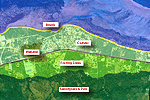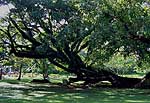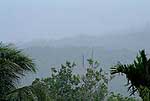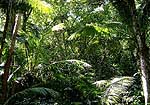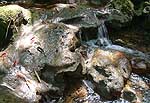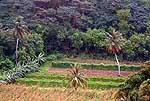|
|
Areas
The different areas of the greater Tanapag area are explained by Ben:
a coastal strip, wetlands, a rising area where fruiting trees seem to
thrive, and then sharply up the slopes of the mountainous spine.
|
|
|
Winds
Though Saipan is not as prone to typhoons as neighboring Guam,
such storms still leave a legacy in Tanapag. In addition to typhoon
stories, Carolinian terms for different winds are discussed.
|
|
|
Rains
The seasons are discussed in this chapter, with names of months presented
in Chamorro and Carolinian. Both cultures contribute terms for different
rains, and some of the distinct Carolinian traditions regarding different
rains are presented.
|
|
The Forest
Despite the massive destruction to Saipan's forests during World
War II, the forests remain an important place for gathering food, materials
and medicines. The forest is also a place where one shows respect for
the dependence of human's upon the bounty of nature.
|
|
Water
Tanapag is served by artesian springs and streams, but most drinking
water comes from the rain. We learn here about the brackish groundwater,
and also the shrimp and eels that live in the upper reaches of the streams.
|
|
|
Planting
For Tanapag, agriculture is mostly a thing of the past. We hear about
some of the past practices, and consider reasons that little agriculture
takes place here today.
|





